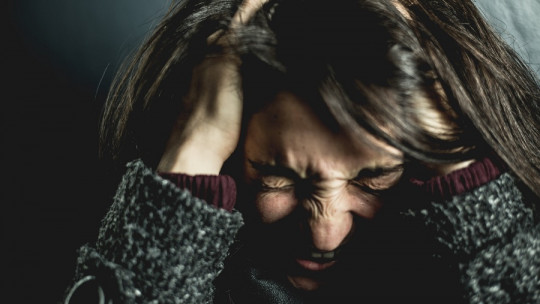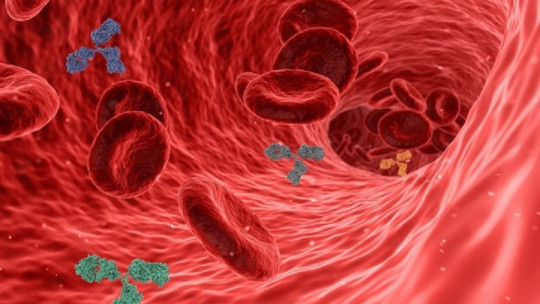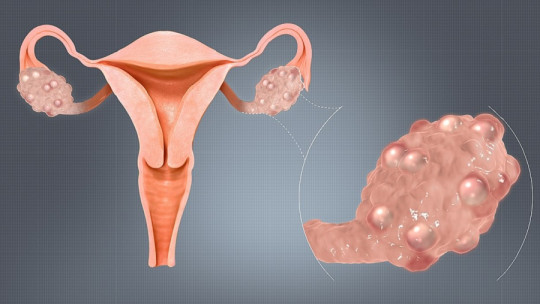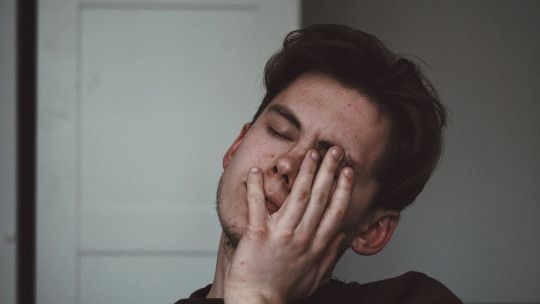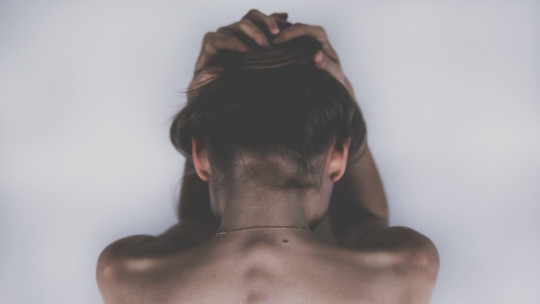
There are different factors, common to both genders, that have the ability to influence headaches, such as family history and age. However, headaches are much more common in women than men. Statistically, over the course of a year, Women are three times more likely than men to suffer at least one migraine
This significant difference in the prevalence of headaches could be explained by the hormonal changes that occur in women during their period. One third of women suffer from headaches caused by menstruation.
These headaches are caused by two so-called female sex hormones: estrogen and progesterone. These substances, secreted by the ovaries, are mainly responsible for controlling the menstrual cycle. It has been shown that these hormones, in addition to cycle and pregnancy regulation, can influence the underlying chemistry of headaches.
Some studies link the menstrual cycle and the fluctuation of hormones – that occurs during it – with some types of headache. In this article we will talk in general terms about the relationship between headaches and the menstrual cycle, and we will describe in depth menstrual migraine one of the most common conditions that occurs during the menstrual period.
What is menstrual migraine?
A menstrual migraine is a debilitating headache that originates from the hormones that regulate menstruation
Different headaches can occur during menstruation. Some do not have their origin in hormones, for example, we can talk about tension headaches. Tension headache is a headache that usually arises from stress; it describes a pain similar to the oppression of wearing a headband.

However, the most common headaches that occur during menstruation do have a hormonal origin. Hormonal headache and menstrual migraine are mainly described. The origin of these two conditions is common, hormone fluctuation but they present different severity of symptoms.
We speak of a hormonal headache when the symptoms range from mild to moderate. Although it is an annoyance or discomfort that lasts over time, it does not affect the development of the person’s normal life.
Menstrual migraine is considered an extreme headache and is debilitating. Normally, it affects only one side of the head and lasts for several hours, even days. Severe palpitations and intense pain interfere with the patient’s daily life preventing you from carrying out daily tasks.
Causes
Migraine is related to dysfunctions that affect the cerebral blood vessels. Its origin is multifactorial, both genetic and environmental factors are included to explain why some people suffer from this pain
Headaches are caused by inflammation of the meninges (the membranes that cover and protect the brain) and the widening of the vessels that supply the brain.
Some studies have shown that this occurs due to an abnormal response of the nervous system In migraine, there is an activation of the trigeminal nerves, which innervate, among other areas, the meninges and cerebral vessels. There is also excessive neuronal activation in the brain stem and in the area of the hypothalamus.
The factors that trigger headaches are quite well identified. Typically, causes of migraines are stress or anxiety, poor sleep hygiene, diet, climate, and exposure to noise or flashing lights, among other known causes.
Hormonal fluctuations, which occur throughout a woman’s life, modulate the appearance of migraine and the evolution of the disease and its symptoms.
Hormones are chemical substances responsible for regulating different functions. They influence other cells other than those that have secreted them They act as messengers between the different systems and tissues of the human body.
Progesterone and estrogen are the hormones responsible for regulating the menstrual cycle and pregnancy. Although this is their main function, they also influence other mechanisms, since they travel through the bloodstream and can reach any part of the body through it.
A relationship has been shown between the molecules that cause headaches in the brain and female hormones. Specifically, Changes in estrogen levels have been linked to headache patterns A stable level could improve the symptoms, however, a decrease in this hormone causes worsening.
The menstrual cycle is mainly regulated by two hormones. Estrogen helps release the egg, which normally occurs in the middle of the menstrual cycle. Hormone levels are lowest just before your period. Progesterone also plays a key role in the hormonal cycle. After ovulation, the ovaries produce progesterone, which is responsible for preparing the uterus for possible fertilization. If there is no fertilization, the levels drop again
These changes in levels that occur throughout the hormonal cycle (they are not stable). They are responsible for headaches. Also, headaches can occur in menopausal or premenopausal people who experience a decrease in female hormones. Another situation, known and non-pathological, where great changes in these hormones occur is during pregnancy.
Symptoms of menstrual migraine
Menstrual migraine shares a series of symptoms with other types of migraines frequently manifested:
Menstrual migraine also presents symptoms related to menstruation that include:
How to treat menstrual migraine?
There are different preventive strategies that help in the treatment of menstrual migraine and depend on the situation that causes them. That is why it is advisable to keep a migraine diary to help identify the factors likely to cause migraine, among which are foods, sleep patterns, lifestyle, stress, environmental conditions, etc
Changes in lifestyle
All healthy lifestyle changes can significantly intervene in migraine symptoms and their reduction. Yoga, dietary changes, and meditation can help most people who suffer from migraines. There is no quick fix but trying different approaches is important to increase the chances of finding a suitable solution.
- You may be interested: “10 psychologically healthy daily habits, and how to apply them to your life”
Medication
Preventive treatment is used to reduce the frequency and symptoms of migraines and influence their appearance. This is based on taking non-steroidal anti-inflammatory drugs, which include ibuprofen and naproxen. Taking medication will depend mainly on the regularity of the cycles If the cycle is regular, it is advisable to take the medication a few days before the period and maintain the treatment for 15 days.
If it is irregular, daily drug treatment may be necessary. This treatment can be of a different nature, including anticonvulsants, calcium channel blockers, beta blockers or antidepressants.
Hormonal contraceptives
Depending on the patient, the use of hormonal treatments, often the birth control pill, to prevent excessive hormonal fluctuations and reduce headaches, have been proven ineffective. It is true that in some patients they can help reduce the appearance of migraines, since they influence estrogen levels. However, This practice is only recommended in women for whom other treatments do not work do not suffer from migraines with aura and do not present mood alterations due to contraceptives.
Estrogens
For people going through menopause, taking estrogen can influence headaches. Some get worse, while others show improvement. One of the solutions that are given is using an estrogen skin patch this provides a stable amount of estrogen and does not affect headaches.
Conclusion
Menstrual migraine is a type of migraine that is caused by the fluctuation of hormones that regulate the menstrual cycle. This pathological condition differs from hormonal headaches in the severity of its symptoms, since it affects the daily tasks of people who suffer from it. It shares symptoms with general migraines, and its manifestations include intense pain and sensitivity to light and sounds. Although they are difficult to treat, there are a series of preventive treatments and lifestyle changes that can help relieve symptoms and reduce their frequency.


